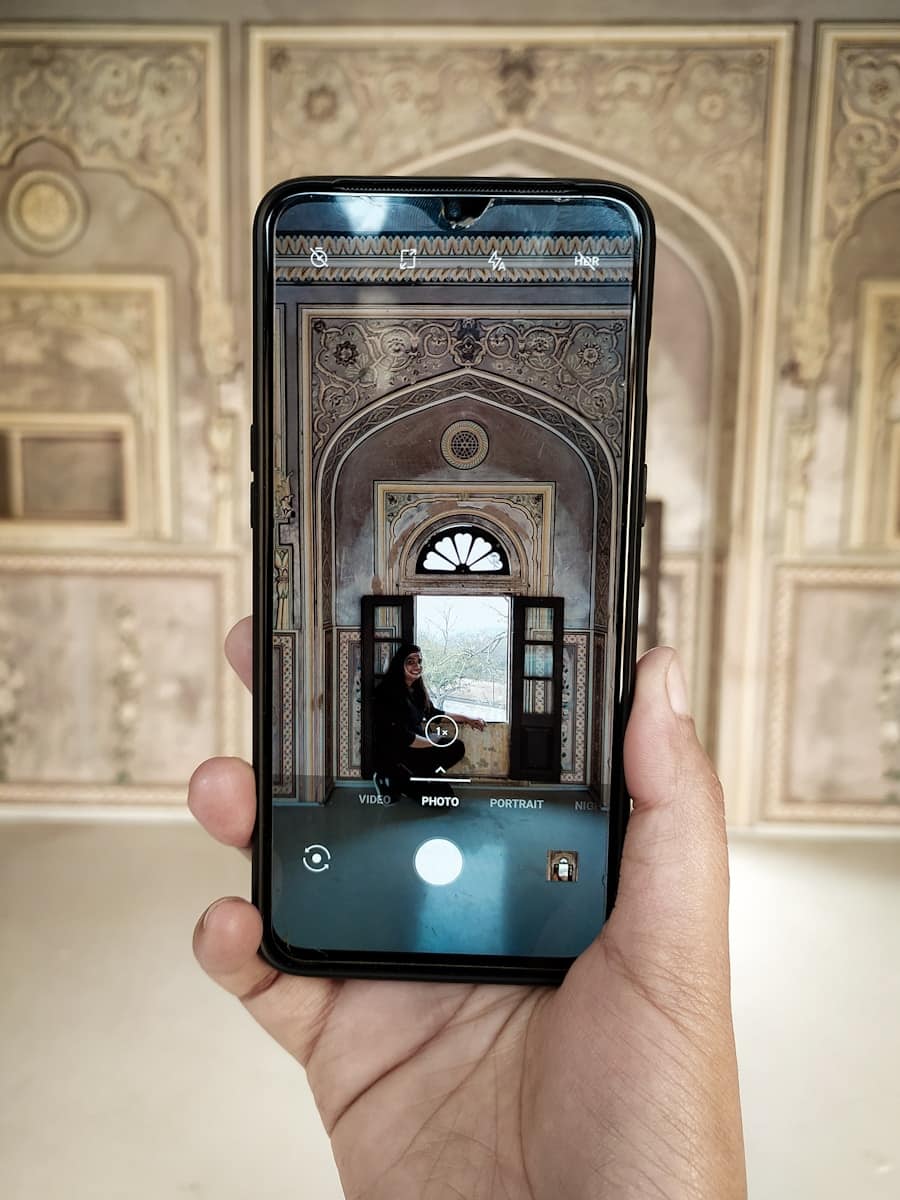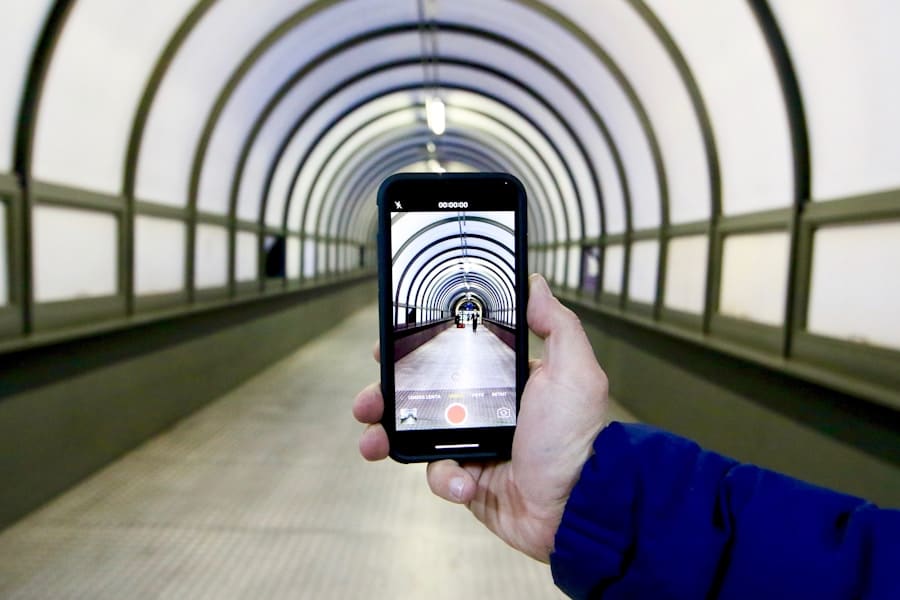Augmented Reality (AR) has emerged as a transformative technology, reshaping how we interact with our environment. The rise of AR-enabled navigation systems is a testament to this evolution, providing users with enhanced spatial awareness and real-time information overlays. Initially popularized through mobile applications and gaming, AR has found its way into navigation, offering a more intuitive way to explore both outdoor and indoor spaces.
The integration of AR with GPS and mapping technologies has led to a new paradigm in navigation, where digital information is seamlessly blended with the physical world. The proliferation of smartphones equipped with advanced sensors and cameras has significantly contributed to the rise of AR-enabled navigation. These devices can now recognize their surroundings, allowing for the overlay of digital content onto the real world.
Companies like Google and Apple have invested heavily in AR technologies, developing applications that guide users through complex environments with visual cues and interactive elements. For instance, Google Maps has introduced features that allow users to see directional arrows and points of interest superimposed on their camera view, making navigation more intuitive and engaging.
Key Takeaways
- AR-enabled navigation is on the rise, offering a new way to navigate indoor spaces using augmented reality technology.
- Advantages of AR-enabled navigation for indoor spaces include improved wayfinding, enhanced user experience, and increased accessibility for people with disabilities.
- Challenges and limitations of AR-enabled navigation include technical issues, limited accuracy, and potential privacy and security concerns.
- Future developments in AR-enabled navigation technology may include improved accuracy, expanded applications, and integration with IoT and smart building technologies.
- AR-enabled navigation has applications in various industries, including retail, healthcare, and tourism, offering potential benefits for businesses and users alike.
Advantages of AR-Enabled Navigation for Indoor Spaces
Enhancing Wayfinding in Indoor Spaces
Indoor environments, such as shopping malls, airports, and large office buildings, can be complex and difficult to navigate. AR navigation systems address this issue by providing real-time visual guidance that is contextually relevant to the user’s location. For example, an AR application can display arrows on the floor leading to a specific store in a mall or highlight the nearest restroom in an airport.
Improving Accessibility for Individuals with Disabilities
AR-enabled navigation can also improve accessibility for individuals with disabilities. By providing auditory cues or haptic feedback alongside visual instructions, these systems can cater to users with varying needs. For instance, a visually impaired person could use an AR navigation app that communicates directions through vibrations or voice prompts, ensuring they can navigate complex indoor spaces independently.
Promoting Equal Access to Public Facilities
This inclusivity not only the user experience but also promotes equal access to public facilities. By providing accessible navigation tools, individuals with disabilities can navigate complex indoor spaces with greater ease and confidence, promoting equal access to public facilities and enhancing their overall quality of life.
Challenges and Limitations of AR-Enabled Navigation
Despite its numerous advantages, AR-enabled navigation faces several challenges and limitations that must be addressed for widespread adoption. One significant hurdle is the accuracy of location tracking indoors. Unlike outdoor environments where GPS signals are strong and reliable, indoor spaces often suffer from weak or nonexistent GPS signals due to obstructions like walls and ceilings.
As a result, AR navigation systems must rely on alternative positioning methods such as Wi-Fi triangulation or Bluetooth beacons, which can introduce inaccuracies and inconsistencies in user positioning. Another challenge lies in the technological requirements for effective AR navigation. Users need devices with sufficient processing power and battery life to run complex AR applications smoothly.
Additionally, the development of AR-enabled navigation systems requires significant investment in infrastructure, such as installing beacons or sensors throughout indoor spaces. This can be a barrier for smaller businesses or organizations that may not have the resources to implement such technologies.
Future Developments in AR-Enabled Navigation Technology
The future of AR-enabled navigation technology is poised for significant advancements as research and development continue to evolve.
AI algorithms can analyze user behavior and preferences, allowing for personalized navigation experiences that adapt to individual needs.
For instance, an AI-driven AR navigation app could learn a user’s frequent routes and suggest shortcuts or alternative paths based on real-time traffic conditions or crowd levels. Additionally, advancements in hardware technology will play a crucial role in enhancing AR navigation capabilities. The development of lightweight smart glasses equipped with AR features could provide users with hands-free navigation experiences.
These glasses could overlay directions directly onto the user’s field of vision without requiring them to look down at their smartphones. Such innovations would not only improve usability but also increase safety by allowing users to remain aware of their surroundings while navigating.
Applications of AR-Enabled Navigation in Different Industries
AR-enabled navigation has found applications across various industries, each leveraging the technology to enhance operational efficiency and user experience. In retail, for example, stores are increasingly adopting AR navigation systems to guide customers through their aisles and highlight promotions or new products. By scanning QR codes or using store apps, shoppers can receive personalized recommendations based on their preferences, making their shopping experience more engaging and efficient.
In healthcare, AR-enabled navigation can assist patients in finding their way within large hospital complexes. By providing step-by-step directions to specific departments or facilities, these systems can reduce patient anxiety and improve overall satisfaction with healthcare services. Furthermore, medical professionals can utilize AR navigation tools during surgeries or procedures to visualize critical information overlaid on their field of view, enhancing precision and outcomes.
Privacy and Security Concerns in AR-Enabled Navigation
As with any technology that collects and processes user data, privacy and security concerns are paramount in the realm of AR-enabled navigation. These systems often require access to sensitive information such as location data, personal preferences, and even biometric data in some cases. The potential for misuse or unauthorized access to this information raises significant ethical questions about user consent and data protection.
To address these concerns, developers must implement robust security measures to safeguard user data. This includes encryption protocols for data transmission and storage, as well as transparent privacy policies that inform users about how their data will be used. Additionally, users should be empowered with control over their data, allowing them to opt-in or opt-out of data collection practices as they see fit.
Striking a balance between innovation and privacy will be crucial for fostering trust among users and ensuring the long-term success of AR-enabled navigation technologies.
Integration of AR-Enabled Navigation with IoT and Smart Building Technologies
The integration of AR-enabled navigation with Internet of Things (IoT) devices and smart building technologies presents exciting opportunities for enhancing user experiences in various environments. Smart buildings equipped with IoT sensors can provide real-time data about occupancy levels, environmental conditions, and even emergency situations. By combining this data with AR navigation systems, users can receive dynamic updates that inform them about changes in their surroundings.
For instance, in a smart office building, an AR navigation app could guide employees to available meeting rooms based on real-time occupancy data. If a room becomes occupied unexpectedly, the app could automatically suggest alternative locations nearby. This level of integration not only streamlines operations but also enhances user satisfaction by providing timely information that adapts to changing circumstances.
Moreover, the synergy between AR navigation and IoT technologies can facilitate enhanced safety measures in public spaces. In emergency situations such as fires or natural disasters, AR-enabled navigation systems could provide clear evacuation routes based on real-time data from building sensors. This capability could significantly improve response times and ensure that individuals can navigate safely out of harm’s way.
The Impact of AR-Enabled Navigation on User Experience and Accessibility
The impact of AR-enabled navigation on user experience is profound, fundamentally altering how individuals interact with their environments. By providing intuitive visual cues and contextual information, these systems enhance spatial awareness and reduce cognitive load during navigation tasks. Users no longer need to rely solely on traditional maps or verbal directions; instead, they can engage with their surroundings in a more immersive manner.
Accessibility is another critical aspect where AR-enabled navigation shines. By catering to diverse user needs through customizable features such as voice commands or tactile feedback, these systems promote inclusivity in public spaces. For individuals with disabilities or those unfamiliar with an environment, AR navigation offers a sense of empowerment by enabling independent exploration without reliance on others for assistance.
As technology continues to advance, the potential for AR-enabled navigation to reshape user experiences will only grow. With ongoing developments in AI, IoT integration, and hardware capabilities, the future promises even more innovative solutions that enhance both accessibility and engagement in navigating complex environments. The journey toward fully realizing the potential of AR-enabled navigation is just beginning, but its impact on society is already becoming evident across various sectors.
If you are interested in exploring the latest advancements in smartphone technology, you may want to check out the Huawei Mate 50 Pro. This cutting-edge device offers innovative features that could potentially enhance AR-enabled navigation experiences in indoor spaces. Additionally, if you are looking to unlock the full potential of your smartphone, the Samsung Galaxy S21 is worth considering. With its powerful capabilities, this device could further revolutionize the way we interact with AR technology. And for those interested in software tools that can aid in creating AR experiences, the Studio3 to SVG Converter from Ideas R Us Software is a valuable resource to explore.
FAQs
What is AR-enabled navigation for indoor spaces?
AR-enabled navigation for indoor spaces refers to the use of augmented reality technology to provide real-time navigation and guidance within indoor environments such as shopping malls, airports, museums, and office buildings. This technology overlays digital information, such as directions and points of interest, onto the user’s view of the physical environment through a smartphone or AR-enabled device.
How does AR-enabled navigation work?
AR-enabled navigation uses a combination of sensors, cameras, and software to track the user’s location and orientation within a building. This information is then used to overlay digital information, such as directional arrows, signage, and points of interest, onto the user’s view of the physical environment. Users can then follow these digital cues to navigate through indoor spaces with greater ease and efficiency.
What are the potential benefits of AR-enabled navigation for indoor spaces?
Some potential benefits of AR-enabled navigation for indoor spaces include improved wayfinding and navigation, enhanced user experience, increased engagement with indoor environments, and the ability to provide personalized and context-aware information to users. This technology has the potential to revolutionize the way people navigate and interact with indoor spaces, making it easier to find specific locations, discover new points of interest, and access relevant information in real time.
What are the challenges of implementing AR-enabled navigation for indoor spaces?
Challenges of implementing AR-enabled navigation for indoor spaces include the need for accurate indoor mapping and positioning data, the development of user-friendly and intuitive AR interfaces, the integration of AR technology with existing indoor navigation systems, and the need to address privacy and security concerns related to the collection and use of location data within indoor environments. Additionally, ensuring seamless and reliable performance of AR-enabled navigation in complex indoor environments with varying levels of connectivity and environmental conditions is also a challenge.
What is the future outlook for AR-enabled navigation for indoor spaces?
The future of AR-enabled navigation for indoor spaces is promising, with ongoing advancements in AR technology, indoor mapping, and location-based services. As the technology continues to mature, we can expect to see more widespread adoption of AR-enabled navigation in various indoor environments, as well as the development of new applications and use cases that leverage the potential of AR to enhance indoor navigation and wayfinding experiences. Additionally, the integration of AR-enabled navigation with other emerging technologies, such as IoT and AI, is likely to further expand the capabilities and impact of AR in indoor spaces.



